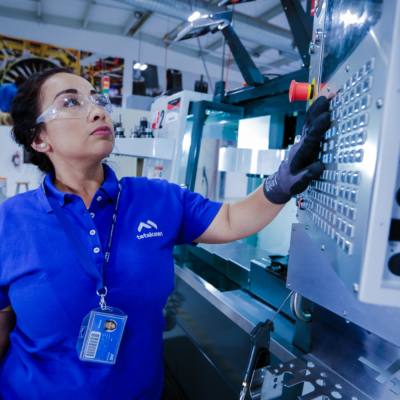In recent years, social media has created a new generation of celebrities—Child Influencers Earnings. These young stars often earn significant incomes through brand deals, sponsorships, and advertising on platforms like YouTube, Instagram, and TikTok. As their earnings grow, concerns about financial protection, fair labor practices, and legal regulations have gained attention worldwide. Understanding child influencers earnings laws and social media regulation is important for parents, content creators, brands, and policymakers.
This article explains the current state of social media regulation, laws governing child influencers’ earnings, and why these rules matter for the future of young digital stars.
What Are Child Influencers?
Child influencers are minors, usually under 18 years old, who create content on social media and have a significant online following. Unlike traditional child actors or models, these influencers often produce content themselves or with help from family members. They share videos, photos, and livestreams that can reach millions of viewers.
Many child influencers earn money from:
- Sponsored posts or product placements
- YouTube ad revenue
- Brand collaborations
- Merchandise sales
The financial stakes can be very high, sometimes reaching millions of dollars every year.

Why Are Child Influencers Earnings Laws Needed?
The earnings of child influencers raise unique legal and ethical questions. Historically, child actors have been protected under labor laws to ensure their safety, education, and fair pay. However, social media influencers often fall outside traditional entertainment regulations.
There are several important reasons for child influencers earnings laws:
- To protect children’s earnings from exploitation or misuse by adults
- To regulate working hours and prevent burnout
- To ensure transparency in contracts and payments
- To protect children’s privacy and online safety
Without these laws, children risk exploitation, financial mismanagement, and overwork.
Existing Laws on Child Performers vs. Social Media Child Influencers
Many countries have child labor laws covering performers in film, television, and theater. These laws usually require:
- Work permits or licenses
- Limits on working hours
- Supervision by a guardian or professional
- A portion of earnings held in trust (like Coogan accounts in California)
However, child influencers often work independently or with family, creating a gray area. Traditional laws don’t always apply, leading to gaps in protection.
Social Media Regulation for Child Influencers: An Emerging Landscape
Because child influencers are growing rapidly in number and earnings, governments and social media platforms are starting to update regulations.
United States
In the US, some states have begun applying existing child performer laws to child influencers. For example, California’s Coogan Law requires a percentage of a child’s earnings to be saved in a trust to protect their income. The Federal Trade Commission (FTC) also requires influencers to disclose sponsored content clearly.
Additionally, various states are considering laws to protect young content creators by regulating labor conditions and financial safeguards.
European Union
The EU has introduced data protection rules that include special protections for children online. Some countries in the EU are exploring specific rules for child influencers, though regulations vary widely.
Other Countries
Countries like Canada and Australia are discussing protections for child influencers but have yet to develop specific laws.
Social Media Platforms’ Role in Regulation
Platforms such as YouTube, TikTok, and Instagram have taken some steps to protect young users but are often criticized for not doing enough regarding child influencers’ earnings and well-being. Their initiatives include:
- Age restrictions and content moderation
- Parental control tools
- Monetization policies requiring account holder verification
However, platforms typically leave financial and labor protections to governments, showing the need for stronger cooperation.
Key Elements of Child Influencers Earnings Laws
Laws designed to protect child influencers’ earnings and rights usually include:
- Earnings trusts: requiring a portion (often 15% to 25%) of income to be saved for the child’s future
- Limits on working hours to prevent exploitation
- Oversight of contracts to ensure fairness
- Parental accountability with legal consequences for misuse
- Protection of education rights
- Transparency for sponsored content and earnings
Challenges in Regulating Child Influencers
Regulating child influencers is complicated due to:
- Blurred lines between entertainment, advertising, and personal content
- Global audiences making jurisdiction and enforcement difficult
- Family-run channels that may lead to conflicts of interest
- Fast changes in social media trends and monetization models
Why Awareness and Advocacy Matter
For child influencers and families, understanding child influencers earnings laws is critical to protecting young creators’ futures. Brands working with child influencers should also comply with regulations to avoid legal risks.
Advocates recommend:
- Educating parents on financial and legal responsibilities
- Encouraging transparency from brands and platforms
- Pushing for updated and unified laws worldwide
- Supporting mental health and well-being for child influencers

What Parents and Guardians Can Do
Parents and guardians should:
- Set limits on screen time and content creation
- Work with legal experts to create trusts or savings accounts
- Review contracts carefully to ensure fairness
- Support education and emotional health
- Monitor social media activity to protect privacy
The Future of Child Influencers and Regulation
As child influencers continue to grow in importance, lawmakers and social media companies must close existing regulatory gaps. Stronger child influencers earnings laws will:
- Protect children from financial and emotional harm
- Encourage responsible partnerships with brands
- Support ethical and sustainable influencer careers
Continued dialogue between creators, families, regulators, and platforms is key to building a safe environment for young digital stars.
Conclusion
Social media offers amazing opportunities for young creators, but it also comes with responsibilities. Understanding and enforcing child influencers earnings laws is essential to protect their rights and futures.
With the right laws and protections in place, child influencers can have successful, safe, and fulfilling careers in the digital world.
Do Follow USA Glory On Instagram
Read Next – New Gun Control Laws Expand Zones & Ban Trigger Devices






